Creative Activities for Kids: Fun Ideas and Educational Activities
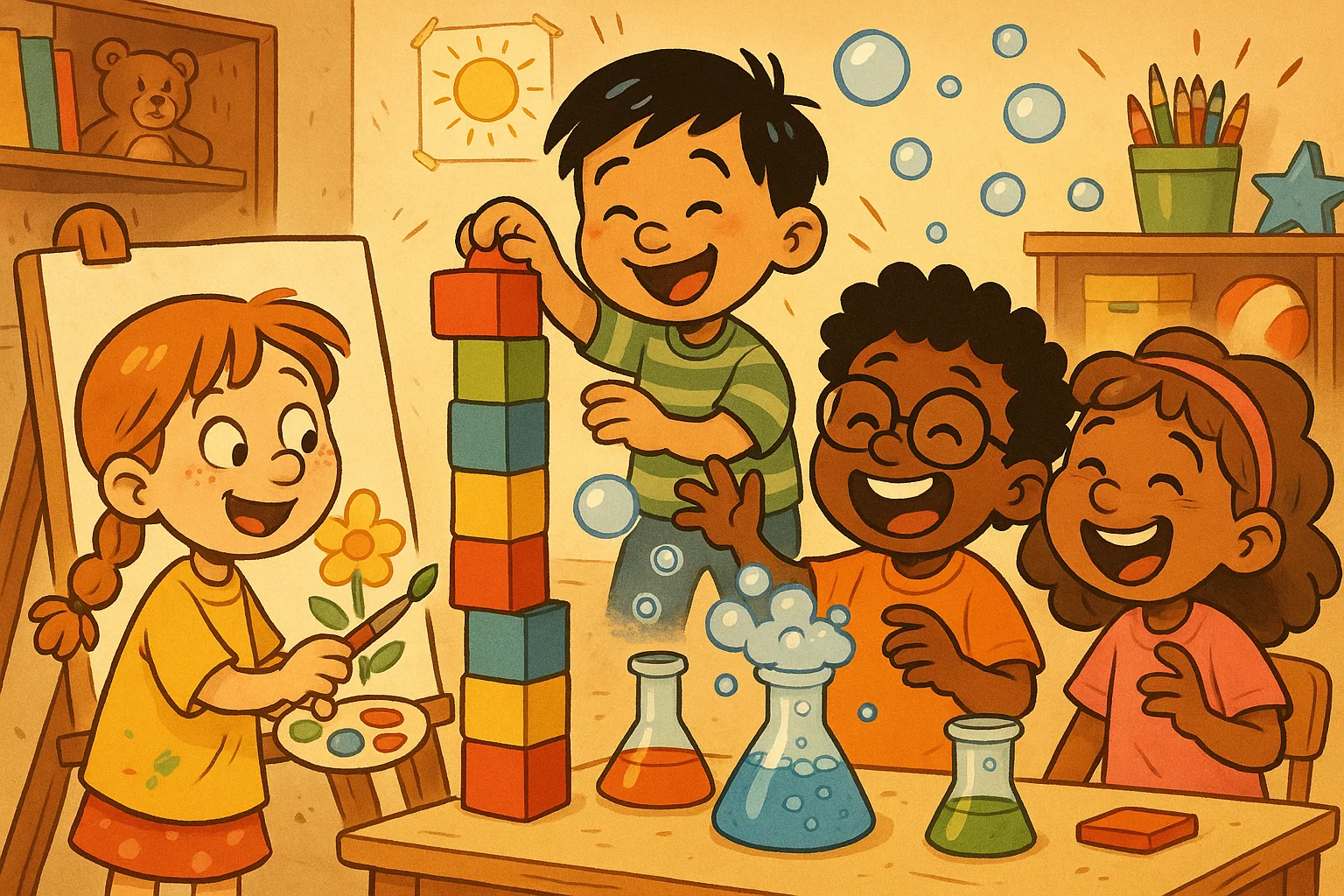
Fostering creativity in children goes far beyond simple entertainment—it’s a cornerstone of healthy development that nurtures problem-solving skills, emotional expression, and cognitive growth.
Whether you’re looking for rainy day solutions or ways to enhance your child’s learning experience, the right mix of fun and educational activities can transform ordinary moments into opportunities for discovery. From hands-on science experiments to imaginative arts and crafts, creative activities provide children with the tools they need to explore their world and express themselves authentically.
Arts and Crafts Activities 🎨
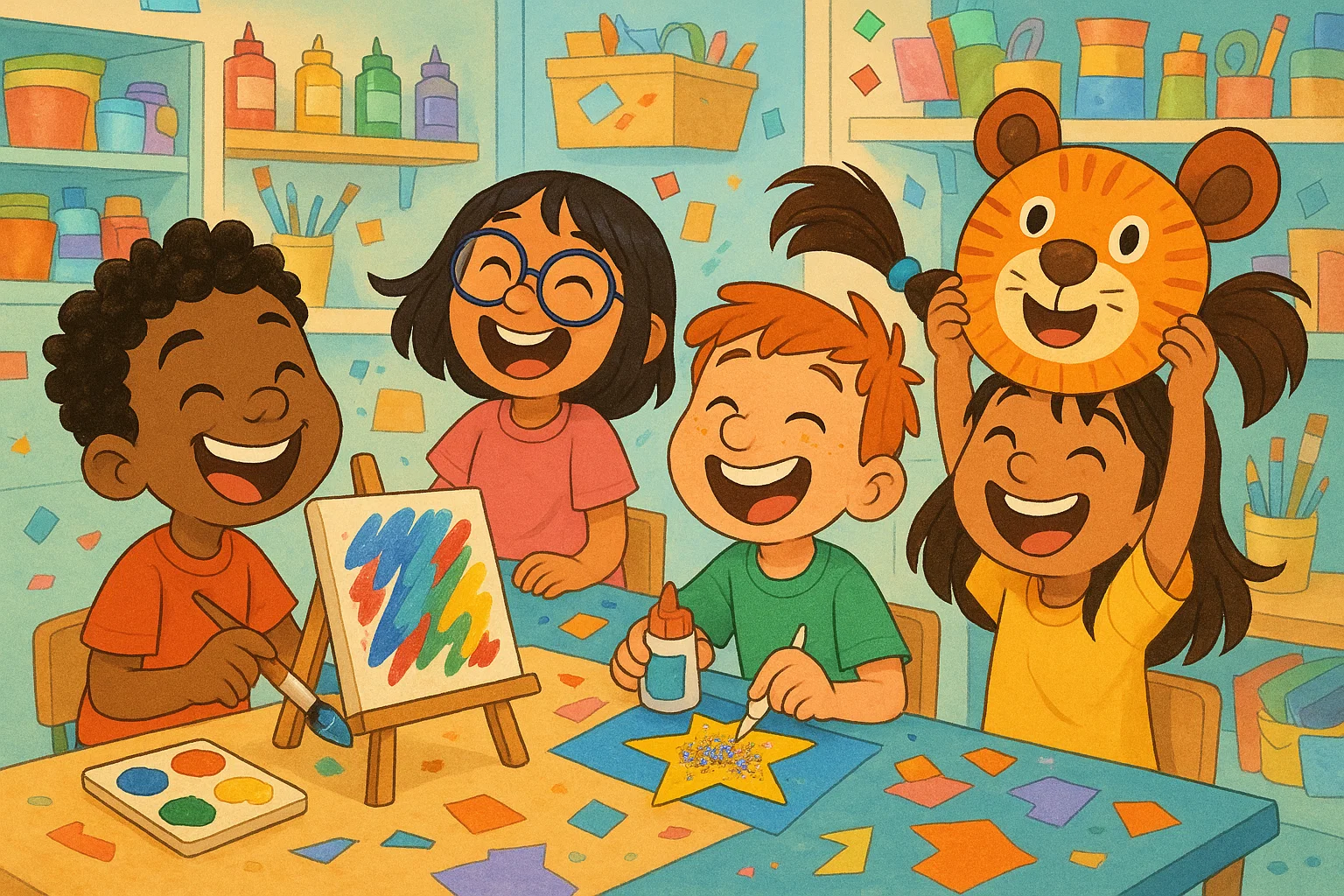
Arts and crafts activities serve as powerful vehicles for developing fine motor skills while encouraging creative expression. These hands-on experiences allow children to explore different textures, colors, and materials while building essential developmental skills.
Easy arts and crafts projects for kids
Simple art projects using basic art supplies can yield impressive results while keeping costs manageable.
- Paper plate crafts offer endless possibilities—transform them into masks, seasonal decorations, or learning tools for younger children.
- Collage making represents another versatile option that encourages kids to get creative with everyday materials.
- Consider organizing craft activities by themes or seasons to maintain engagement.
DIY puppet making for imaginative play
Crafting puppets opens doorways to storytelling and dramatic play that can captivate children for hours.
- Sock puppets require minimal supplies, yet they ignite powerful creative processes in young minds.
- Paper bag puppets offer an accessible option, particularly effective for group activities or classroom settings.
- The beauty of puppet making lies in its adaptability across different age groups.
Simple craft activities with household supplies
Household items often provide the best foundation for spontaneous creativity.
- Empty cardboard boxes transform into anything from rocket ships to dollhouses, encouraging children to think beyond conventional uses for everyday objects.
- Play dough made from kitchen ingredients offers sensory play opportunities while developing hand strength and coordination.
- Kitchen utensils become artistic tools in creative hands—potato stamps, sponge painting, and even pasta art projects utilize items you likely already own.
Science Experiments 🔬
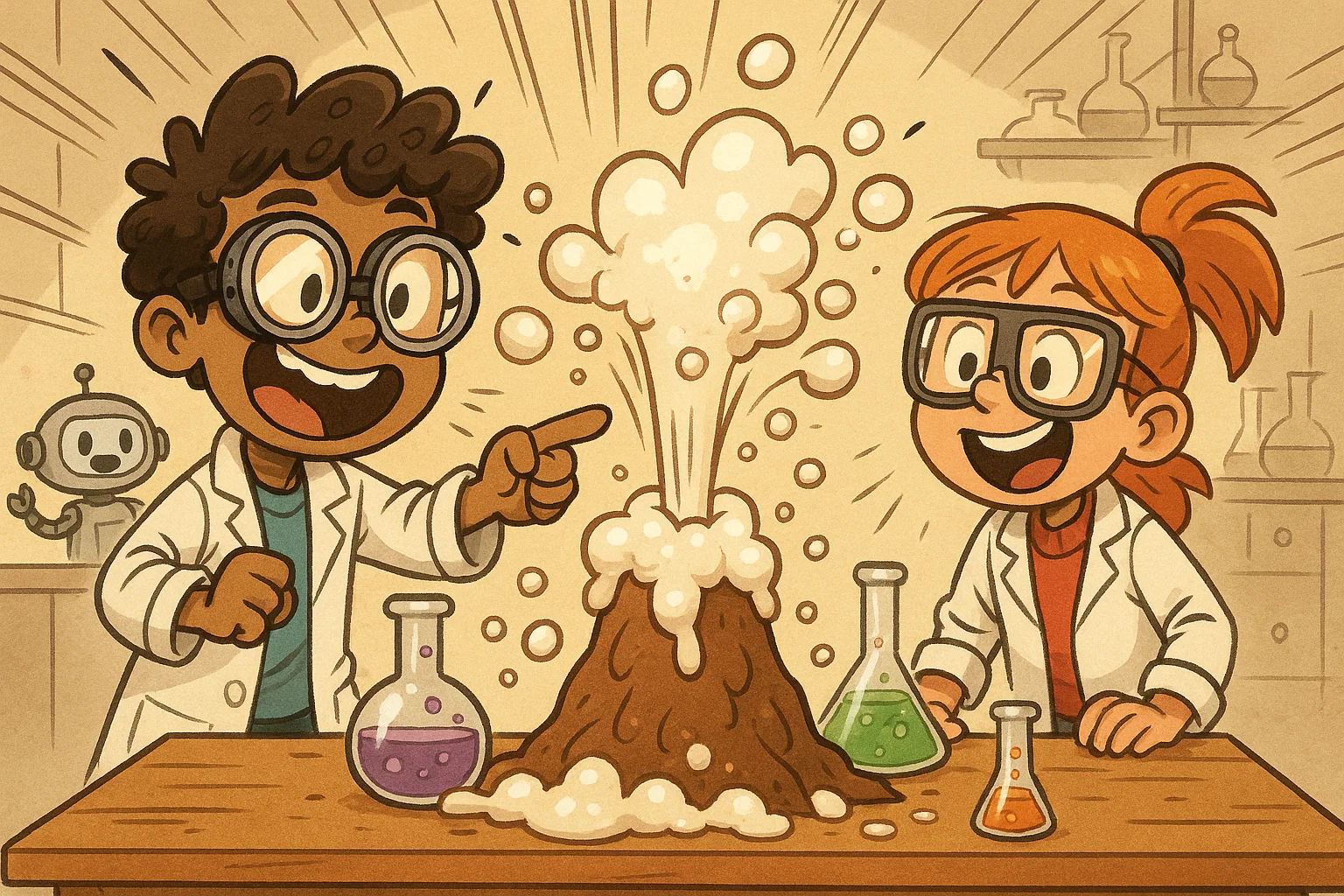
Science experiments transform abstract concepts into tangible learning experiences, making complex ideas accessible to young minds. These activities naturally encourage observation skills and critical thinking, while satisfying children’s innate curiosity about how things work.
Fun science experiments at home
Home-based science experiments typically produce the most memorable learning moments.
- The classic volcano experiment using baking soda and vinegar continues to captivate children.
- Slime making has evolved into a sophisticated science lesson disguising itself as play.
- Growing crystals using salt or sugar solutions provides longer-term observation opportunities.
| Experiment | Materials Needed | Skills Developed | Age Rage |
| Volcano Eruption | Baking soda, vinegar, food coloring | Chemical reactions, cause, and effect | 4–10 years |
| Crystal Growing | Salt/sugar, water, string | Observation, patience, recording | 6–12 years |
| Rainbow Milk | Milk, food coloring, dish soap | Color theory, surface tension | 3–8 years |
| Dancing Raisins | Carbonated water, raisins | Density, gas bubbles | 4–9 years |
Creative science experiments for preschoolers
Preschoolers benefit from science activities that engage multiple senses while maintaining safety as the top priority.
- Color-changing experiments using pH indicators create “magic” that preschoolers can safely observe.
- Water play experiments teach fundamental physics concepts through exploration.
- Magnifying glass exploration turns ordinary objects into extraordinary discoveries.
Kitchen science activities: cooking and baking
Cooking and baking represent perhaps the most practical application of science in daily life.
- Bread making demonstrates yeast activity and fermentation in ways children can observe, smell, and eventually taste.
- Simple cooking projects like making butter from heavy cream teach about physical changes and energy transfer.
Fun Outdoor Activities 🌳
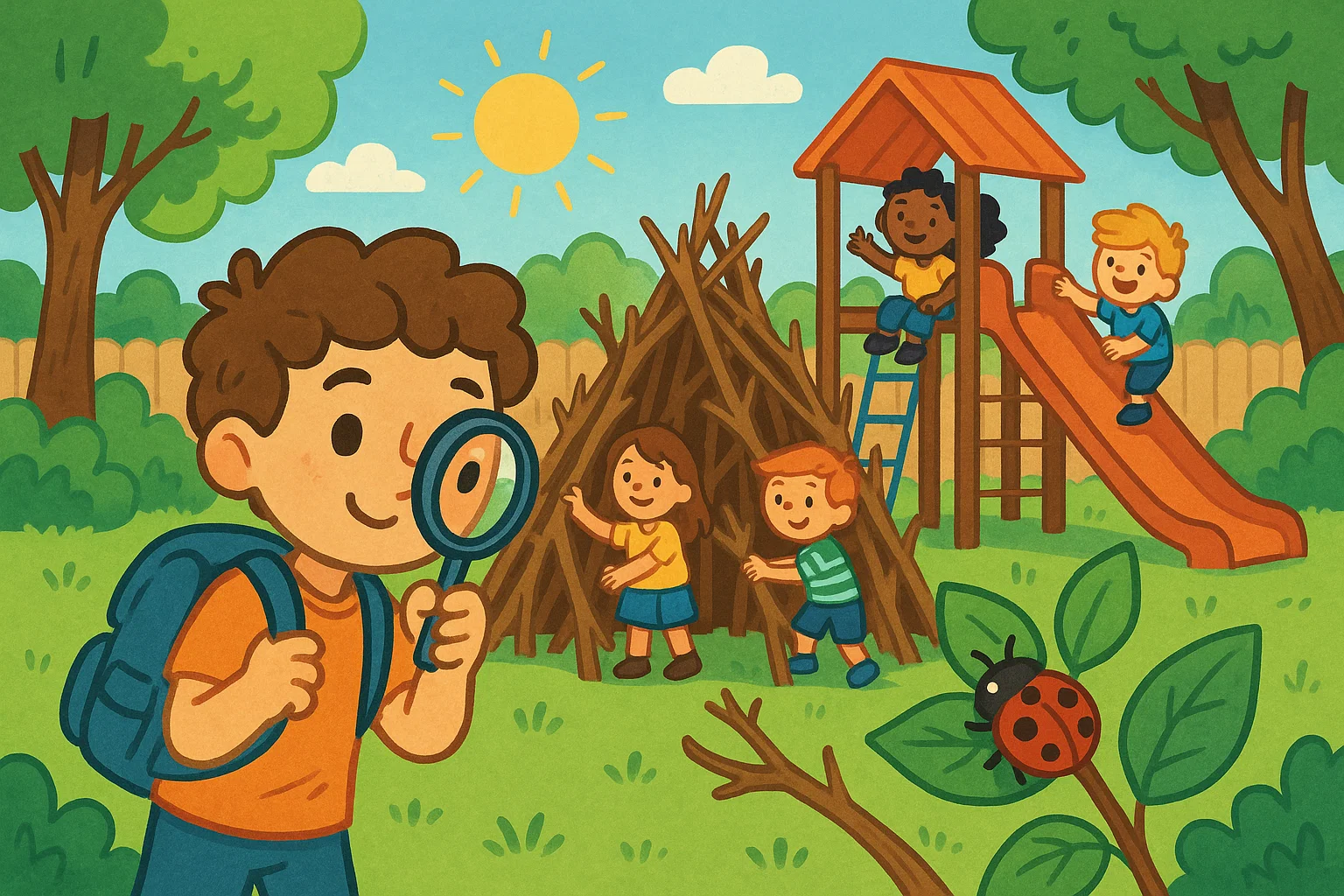
Outdoor exploration provides irreplaceable opportunities for physical activity while connecting children with their natural environment. These experiences enhance problem-solving abilities while promoting physical fitness and environmental awareness.
Nature scavenger hunt ideas for kids
Nature scavenger hunt combines exploration with focused observation, encouraging children to notice details they might otherwise overlook.
- Texture-based scavenger hunts challenge children to find items that feel rough, smooth, soft, or prickly.
- Photo scavenger hunts work well for older kids who can document their discoveries.
- Consider creating themed hunts around specific learning objectives.
Creative ways to explore the outdoors
Outdoor art projects using natural materials combine creativity with environmental education.
- Rock painting transforms ordinary stones into decorative objects.
- Building with natural materials like sticks, stones, and leaves encourages engineering thinking.
- Weather observation activities turn daily conditions into learning opportunities.
Outdoor games for growth and development
Traditional outdoor games continue to provide developmental benefits that modern technology cannot replicate.
- Hide and seek builds spatial reasoning and strategic thinking while encouraging physical activity.
- Tag games develop coordination and social skills while providing excellent cardiovascular exercise.
- Creating obstacle courses using natural or household materials challenges children to problem-solve.
Imaginative Play ✨
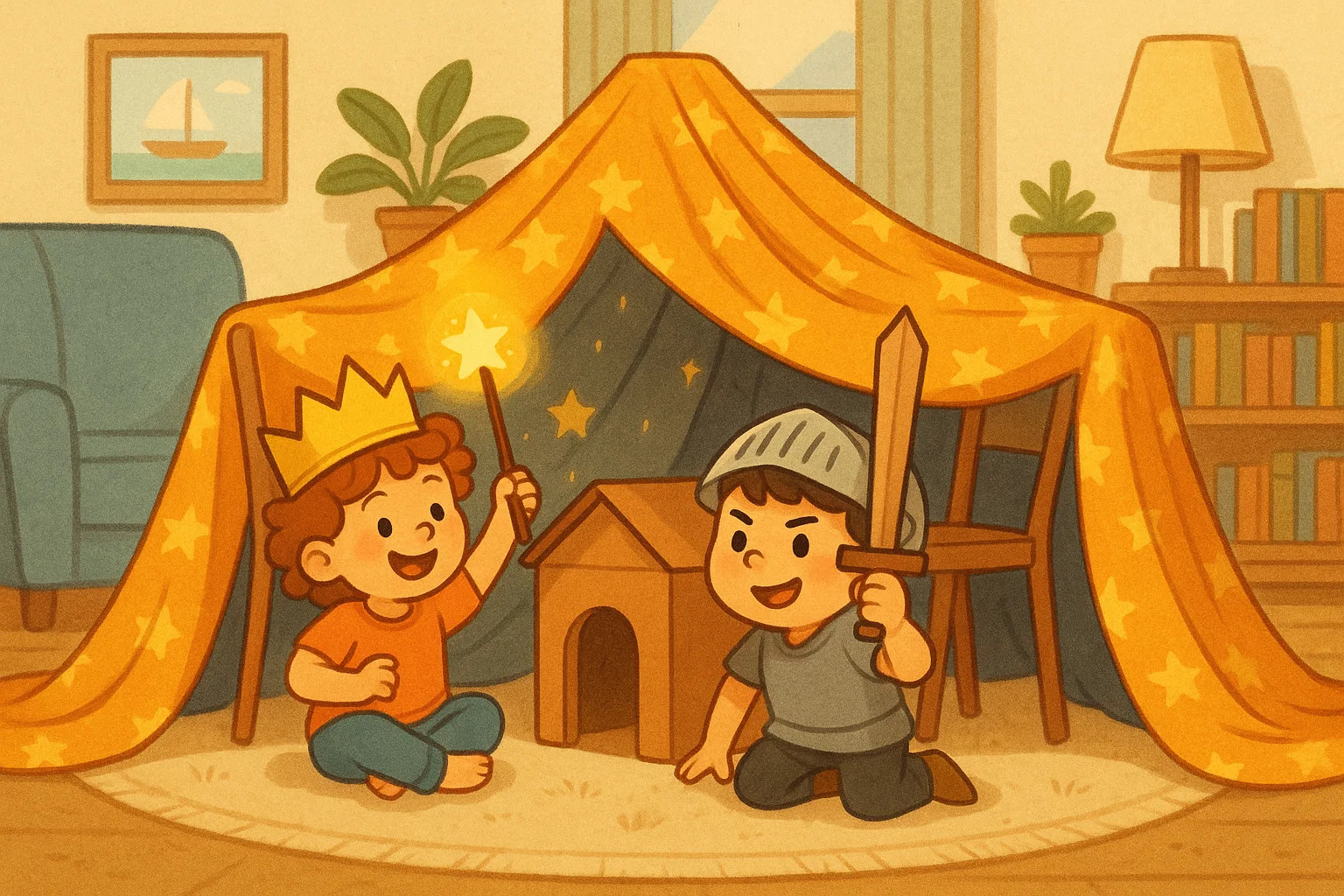
Imaginative play serves as a crucial foundation for emotional development and creative thinking. These activities allow children to process experiences, explore different roles, and develop empathy through pretend scenarios.
How to encourage imaginative play
Creating an environment that supports imaginative play requires thoughtful consideration of space and materials.
- Dress-up boxes filled with various costumes, accessories, and props provide endless role-playing opportunities.
- Open-ended toys that can transform into multiple objects prove more valuable than highly specific items.
- Adults can nurture imaginative play by asking open-ended questions that extend children’s stories.
Building forts and creative play spaces
Fort building represents one of the most universally beloved childhood activities.
- Indoor fort building teaches problem-solving as children figure out how to make blankets stay put.
- Outdoor fort building using natural materials like branches and leaves connects children with their environment.
Activities to spark imagination
Storytelling activities that begin with simple prompts can evolve into elaborate adventures.
- Picture books with minimal text allow children to create their own narratives.
- Role-playing games that don’t require complex rules or materials often produce the most creative outcomes.
- Art activities that combine storytelling with visual creation help children express ideas through multiple mediums.
Other Creative Ideas for Kids 🎯
Beyond traditional categories, numerous activities blend learning with entertainment while developing specific skills that support overall growth and development.
Puzzle and board games
Puzzle activities develop problem-solving skills while building patience and persistence.
- Jigsaw puzzles enhance spatial awareness and visual processing.
- Board games teach rule-following, turn-taking, and strategic thinking.
- Creating homemade puzzles or board games encourages children to think about game mechanics.
Music and dance activities
Musical activities support language development while encouraging creative expression through sound and movement.
- Simple instruments made from household items introduce musical concepts without significant investment.
- Dance activities promote physical fitness while allowing emotional expression.
- Combining music with other activities, such as musical storytelling, engages multiple developmental areas.
Ways to keep kids busy and entertained
Rotating activity supplies prevents boredom while maintaining novelty.
- Creating activity calendars or choice boards helps children participate in planning their own entertainment.
- Setting up activity stations in different areas allows children to move between different types of play.
FAQs
How to keep kids engaged ?
Maintaining children’s engagement requires understanding their individual interests while introducing appropriate challenges. Rotating between active and quiet activities prevents overstimulation while accommodating different energy levels throughout the day.
Where to find art supplies ?
Budget-conscious families can build impressive art supply collections through strategic shopping and creative sourcing. Dollar stores often carry basic supplies like crayons, paper, and glue sticks at fraction of craft store prices. Household items frequently serve as effective substitutes for commercial art supplies. Coffee filters make excellent watercolor paper, while empty containers become perfect paint water holders or supply organizers.
